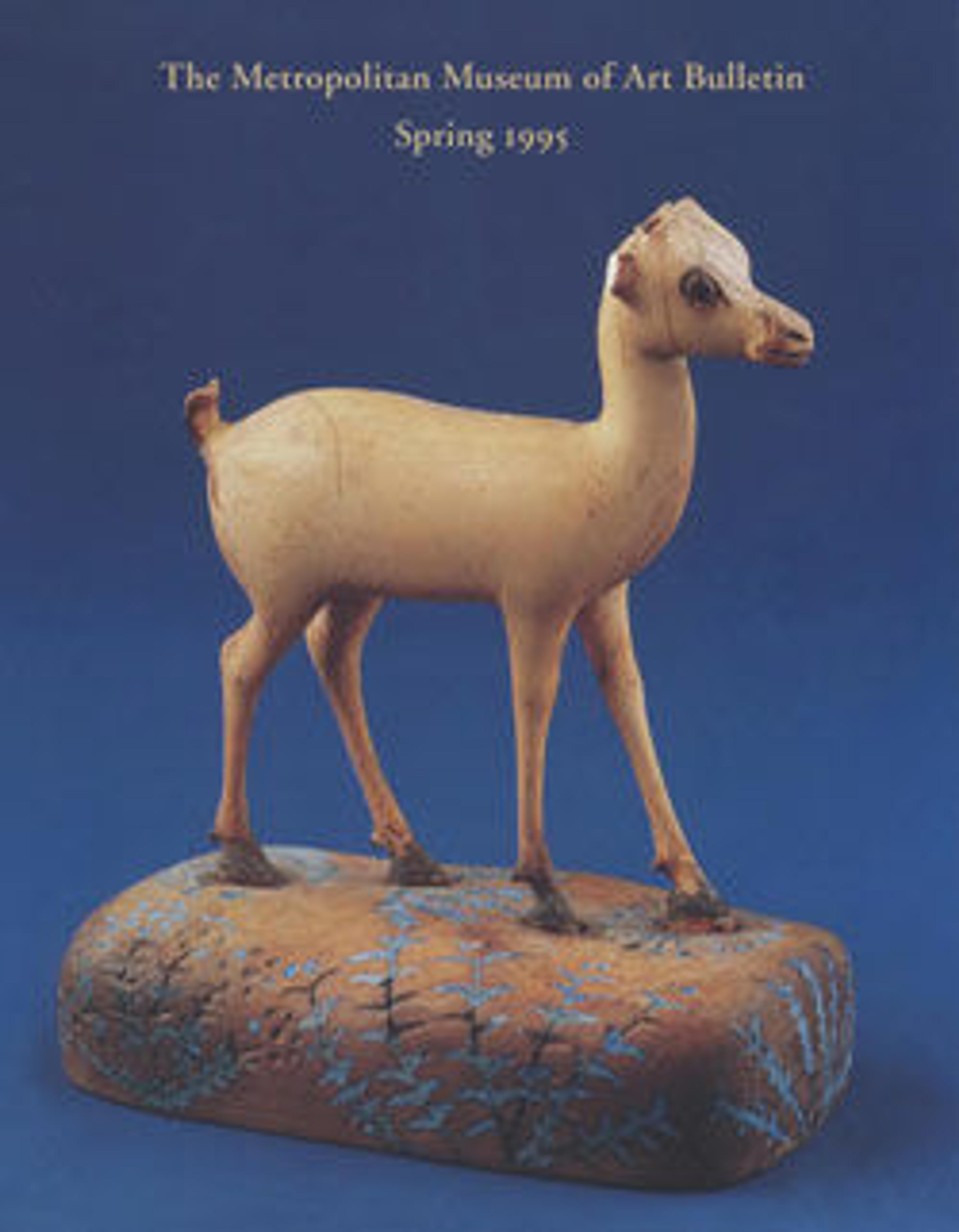Relief fragment with a cobra on the royal head
The temple of Mentuhotep II at Deir el-Bahri combined innovative building ideas with a relief decoration that was largely based on prototypes from the Old Kingdom pyramid temples in the Memphite area. Utterly destroyed by stone robbers in antiquity, this decoration was preserved in thousands of fragments. The relief fragment here depicts the king himself. Preserved are part of his head and headdress; the protective rearing cobra (uraeus) is at his forehead.
Artwork Details
- Title:Relief fragment with a cobra on the royal head
- Period:Middle Kingdom
- Dynasty:Dynasty 11
- Reign:reign of Mentuhotep II, later
- Date:ca. 2020–2000 B.C.
- Geography:From Egypt, Upper Egypt, Thebes, Deir el-Bahri, Temple of Mentuhotep II, Egyptian Exploration Fund excavations, 1905
- Medium:Painted indurated limestone
- Dimensions:H. 9 7/16 in. (24 cm)
- Credit Line:Gift of Egypt Exploration Fund, 1906
- Object Number:06.1231.37
- Curatorial Department: Egyptian Art
Audio
1120. Relief fragment with a cobra on the royal head
0:00
0:00
We're sorry, the transcript for this audio track is not available at this time. Please email info@metmuseum.org to request a transcript for this track.
More Artwork
Research Resources
The Met provides unparalleled resources for research and welcomes an international community of students and scholars. The Met's Open Access API is where creators and researchers can connect to the The Met collection. Open Access data and public domain images are available for unrestricted commercial and noncommercial use without permission or fee.
To request images under copyright and other restrictions, please use this Image Request form.
Feedback
We continue to research and examine historical and cultural context for objects in The Met collection. If you have comments or questions about this object record, please contact us using the form below. The Museum looks forward to receiving your comments.
